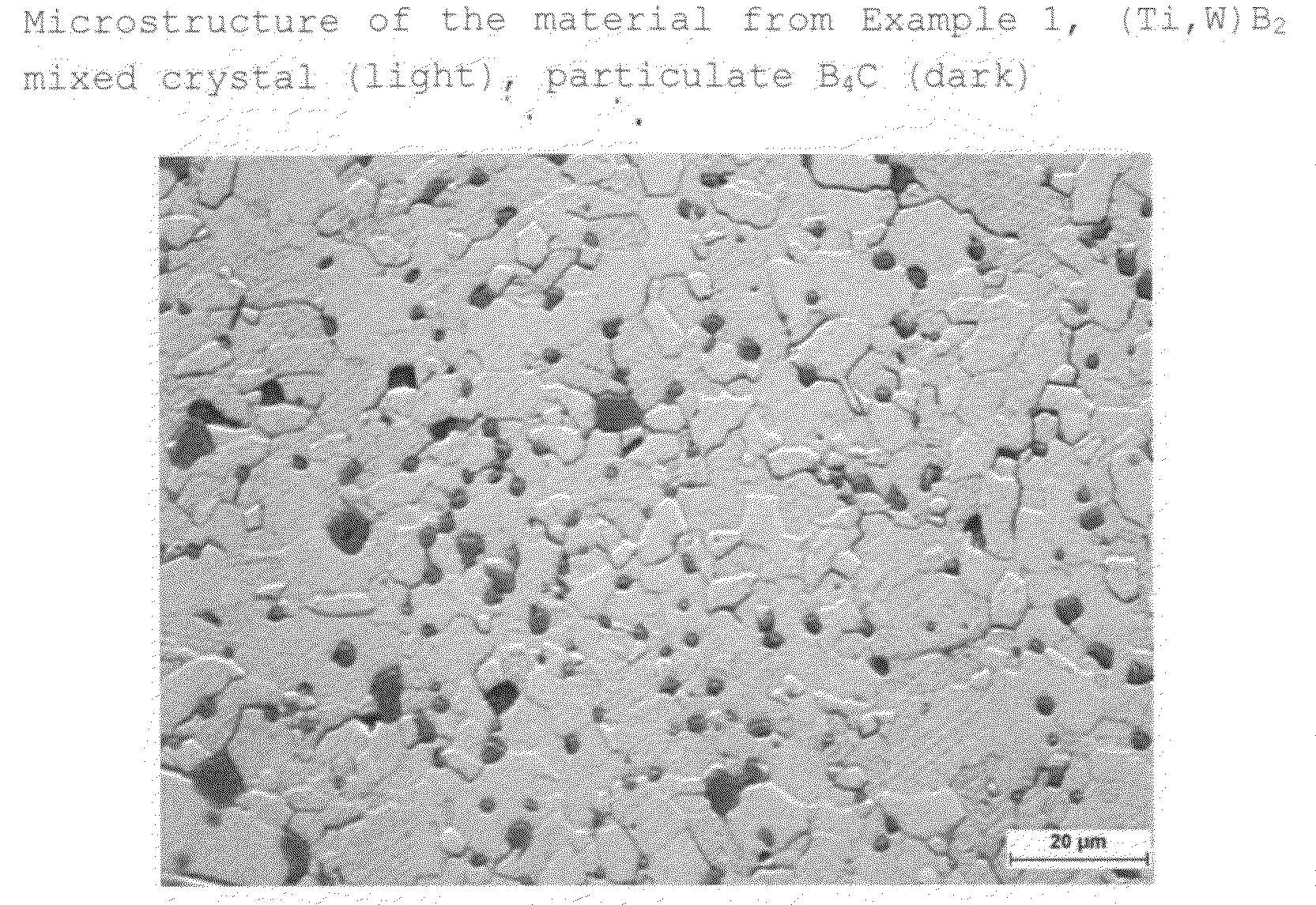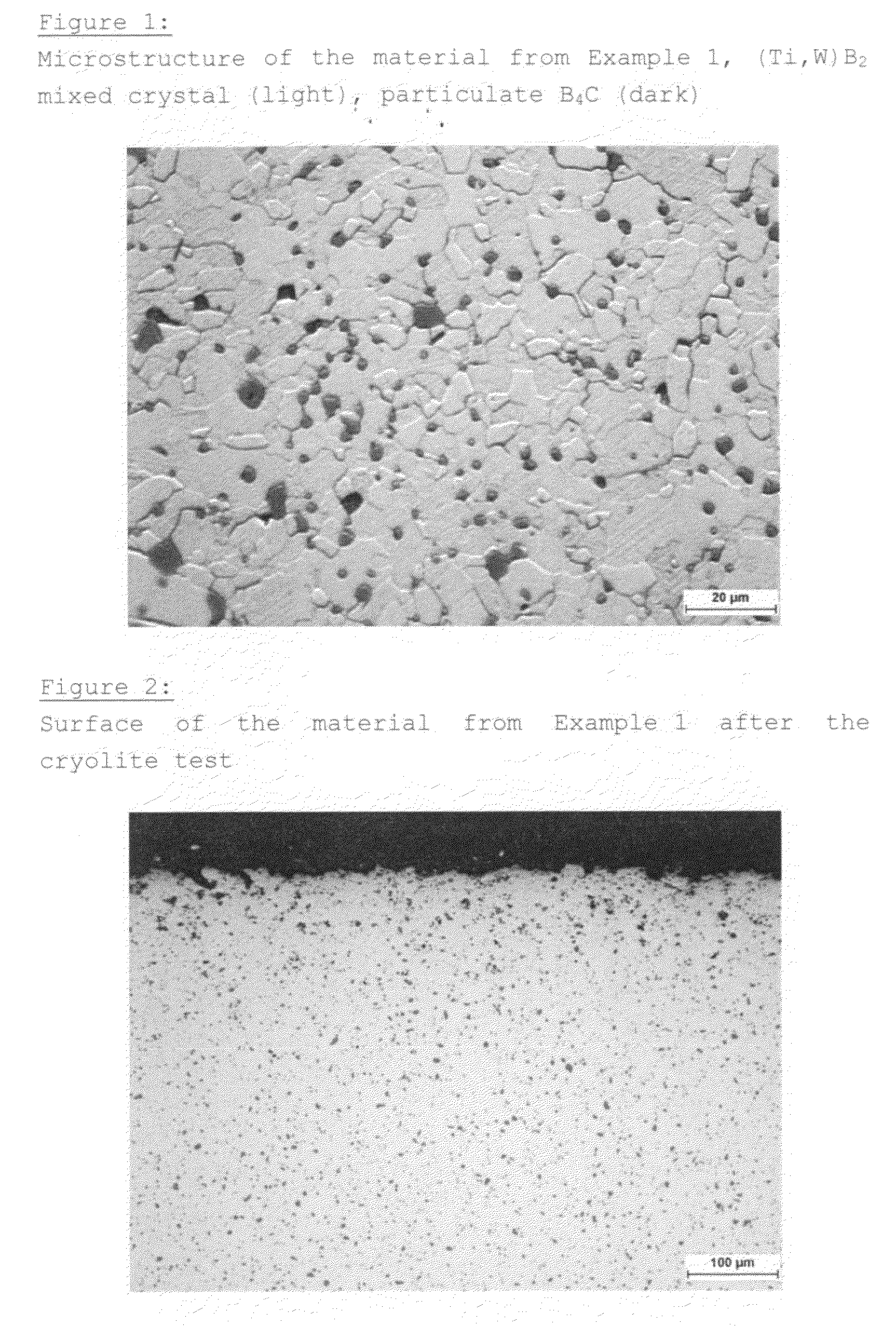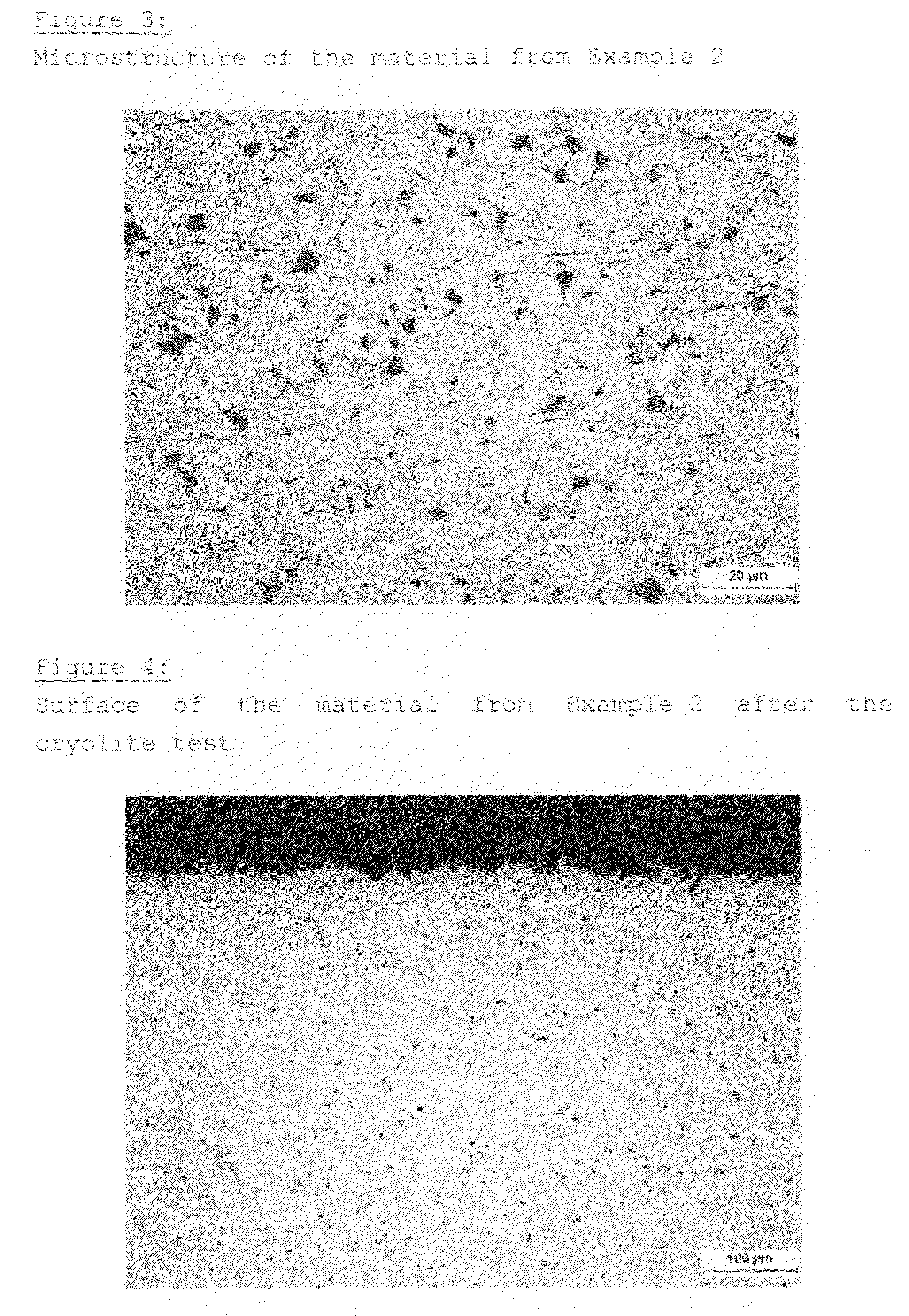Sintered Material, Sinterable Powder Mixture, Method for Producing Said Material and Use Thereof
a technology of sinterable powder and sintering powder, which is applied in the direction of conductive materials, carbon-silicon compound conductors, conductive materials, etc., can solve the problems of poor corrosion resistance, inability to produce bodies or components with complex geometries by this process, and simple body geometries can be produced. , to achieve the effect of simple and inexpensive production, good mechanical properties
- Summary
- Abstract
- Description
- Claims
- Application Information
AI Technical Summary
Benefits of technology
Problems solved by technology
Method used
Image
Examples
example 1
[0062]450 g of TiB2 powder (d50=2 μm; 1.7% by weight of oxygen, 0.15% by weight of carbon, 0.077% by weight of iron), 30 g of tungsten carbide (d504C (d50=0.7 μm) and 2 g of aluminum oxide (boehmite as starting material) are dispersed together with 10 g of polyvinyl alcohol having an average molar mass of 1500 as binder, 20 g of stearic acid as pressing aid and 20 g of commercial sugar in aqueous solution and spray dried. The granular spray-dried material is cold-isostatically pressed at 1200 bar to give green bodies. The green bodies are heated under reduced pressure to 2020° C. at a heating rate of 10 K / min and maintained at the sintering temperature for 45 minutes. Cooling is carried out under Ar with the heating power switched off.
[0063]The density of the sintered bodies obtained is 98% of the theoretical density.
[0064]An optical photomicrograph of the microstructure is shown in FIG. 1.
[0065]The resulting microstructure comprises a (Ti,W)B2 mixed crystal matrix, particulate B4C ...
example 2
[0070]450 g of TiB2 powder (d50=2 μm; 1.7% by weight of oxygen, 0.15% by weight of carbon, 0.077% by weight of iron), 30 g of tungsten carbide (d504C (d50=0.7 μm) and 2 g of aluminum oxide (boehmite as starting material) are dispersed together with 10 g of polyvinyl alcohol having an average molar mass of 1500 as binder and 20 g of stearic acid as pressing aid in aqueous solution and spray dried. The granular spray-dried material is cold-isostatically pressed at 1200 bar to give green bodies. The green bodies are heated under reduced pressure to 1650° C. at a heating rate of 10 K / min, the hold time at 1650° C. is 45 minutes and the green bodies are subsequently heated to 2020° C. at 10 K / min and maintained at the sintering temperature for 45 minutes. Cooling is carried out under Ar with the heating power switched off.
[0071]The density of the sintered bodies obtained is 97.8% of the theoretical density.
[0072]An optical photomicrograph of the microstructure is shown in FIG. 3.
[0073]Th...
reference example 1
[0076]450 g of TiB2 powder (d50=2 μm; 1.7% by weight of oxygen, 0.15% by weight of carbon, 0.077% by weight of iron), 30 g of tungsten carbide (d504C (d50=0.7 μm) and 2 g of aluminum oxide (boehmite as starting material) are dispersed together with 10 g of polyvinyl alcohol having an average molar mass of 1500 as binder and 20 g of stearic acid as pressing aid in aqueous solution and spray dried. The granular spray-dried material is cold-isostatically pressed at 1200 bar to give green bodies. The green bodies are heated under reduced pressure to 2020° C. at a heating rate of 10 K / min and maintained at the sintering temperature for 45 minutes. Cooling is carried out under Ar with the heating power switched off.
[0077]The density of the sintered bodies obtained is 97.9% of the theoretical density.
[0078]An optical photomicrograph of the microstructure is shown in FIG. 5.
[0079]The resulting microstructure comprises a (Ti,W)B2 mixed crystal matrix, particulate B4C, a particulate Ti—Al—B—O...
PUM
| Property | Measurement | Unit |
|---|---|---|
| grain size | aaaaa | aaaaa |
| grain size | aaaaa | aaaaa |
| particle size | aaaaa | aaaaa |
Abstract
Description
Claims
Application Information
 Login to View More
Login to View More - R&D
- Intellectual Property
- Life Sciences
- Materials
- Tech Scout
- Unparalleled Data Quality
- Higher Quality Content
- 60% Fewer Hallucinations
Browse by: Latest US Patents, China's latest patents, Technical Efficacy Thesaurus, Application Domain, Technology Topic, Popular Technical Reports.
© 2025 PatSnap. All rights reserved.Legal|Privacy policy|Modern Slavery Act Transparency Statement|Sitemap|About US| Contact US: help@patsnap.com



